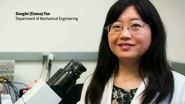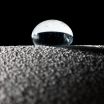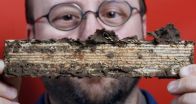(Press-News.org) This news release is available in French.
One company's trash can be another's treasure.
Take Marmite. Made from a by-product of commercial beer production, the yeast-based spread has topped toast throughout the Commonwealth for decades. By recuperating the waste product from one company, another was able to thrive.
Environmental concerns are at the forefront of government policy, so the time is right for companies worldwide to adopt this type of resource exchange, known as industrial symbiosis (IS).
A new study by Concordia University researcher Raymond Paquin published in Long Range Planning shows that this practice must become standard if companies are to continue advancing their environmental efforts.
"IS creates significant economic, environmental and societal value," says Paquin, a professor at Concordia's John Molson School of Business. "It goes beyond turning garbage into something useful — it boosts company profits, creates new jobs and minimizes waste in our landfills."
Paquin's research confirms that companies that view their waste as a valuable resource can reduce disposal costs and boost revenues by reprocessing and selling it to other firms that can use it.
Paquin has studied thousands of firms engaged in IS across the United Kingdom.
"Companies have to think beyond their traditional business focus for IS to be a success," he says. "But it is well worth their time, both economically and environmentally,"
The additional business generated through IS exchanges has even allowed many companies to expand, hiring more employees and developing new arms to manage these transactions.
"It's a win-win situation," says Paquin, noting that the U.K.-founded National Industrial Symbiosis Programme has recently set up shop in Canada.
Although IS is not yet a common practice in North America — unlike in the U.K., where landfills are close to capacity — Paquin believes that this will soon change.
"Consumers and governments are increasingly calling for sustainable action on the part of corporations. As this research shows, industrial symbiosis is a proven approach for companies seeking to economically reduce their landfill and other environmental impacts. Smart firms are integrating IS into their core environmental strategies."
INFORMATION:
Partners in research: This study was funded in part by the Social Sciences and Humanities Research Council.
Is there really cash in your company's trash?
New Concordia University research reveals how firms can boost their revenues while helping the environment
2014-05-20
ELSE PRESS RELEASES FROM THIS DATE:
Engineers build world's smallest, fastest nanomotor
2014-05-20
VIDEO:
Cockrell School of Engineering assistant professor Donglei (Emma) Fan and her mechanical engineering team have built the fastest, smallest nanomotor to date. The team's nanomotor could enable controlled drug delivery...
Click here for more information.
Researchers at the Cockrell School of Engineering at The University of Texas at Austin have built the smallest, fastest and longest-running tiny synthetic motor to date. The team's nanomotor is an important step toward ...
Program to reduce behavior problems boosts math, reading, NYU Steinhardt study shows
2014-05-20
A program aimed at reducing behavior problems in order to boost academic achievement has improved performance in math and reading among low-income kindergartners and first graders, according to a study by researchers at New York University's Steinhardt School of Culture, Education, and Human Development.
Their findings, which appear in the Journal of Educational Psychology, point to the value of well-designed interventions to improve education, the study's authors say.
"Supporting young low-income children so they can reach their potential in the classroom and beyond ...
Professors' super waterproof surfaces cause water to bounce like a ball
2014-05-20
In a basement lab on BYU's campus, mechanical engineering professor Julie Crockett analyzes water as it bounces like a ball and rolls down a ramp.
This phenomenon occurs because Crockett and her colleague Dan Maynes have created a sloped channel that is super-hydrophobic, or a surface that is extremely difficult to wet. In layman's terms, it's the most extreme form of water proof.
Engineers like Crockett and Maynes have spent decades studying super-hydrophobic surfaces because of the plethora of real-life applications. And while some of this research has resulted in ...
Termite genome lays roadmap for 'greener' control measures
2014-05-20
WEST LAFAYETTE, Ind. - A team of international researchers has sequenced the genome of the Nevada dampwood termite, providing an inside look into the biology of the social insect and uncovering new genetic targets for pest control.
Michael Scharf, a Purdue University professor of entomology who participated in the collaborative study, said the genome could help researchers develop control strategies that are more specific than the broad-spectrum chemicals conventionally used to treat termite infestations.
"The termite genome reveals many unique genetic targets that can ...
Fairy circles apparently not created by termites after all
2014-05-20
This news release is available in German. Leipzig. For several decades scientists have been trying to come up with an explanation for the formation of the enigmatic, vegetation-free circles frequently found in certain African grassland regions. Now researchers have tested different prevailing hypotheses as to their respective plausibility. For the first time they have carried out a detailed analysis of the spatial distribution of these fairy circles – and discovered a remarkably regular and spatially comprehensive homogenous distribution pattern. This may best be explained ...
Fossils prove useful in analyzing million year old cyclical phenomena
2014-05-20
Research conducted at the University of Granada has shown that the cyclical phenomena that affect the environment, like climate change, in the atmosphere-ocean dynamic and, even, disturbances to planetary orbits, have existed since hundreds of millions of year ago and can be studied by analysing fossils.
This is borne out by the palaeontological data analysed, which have facilitated the characterization of irregular cyclical paleoenvironmental changes, lasting between less than 1 day and up to millions of years.
Francisco J. Rodríguez-Tovar, Professor de Stratigraphy ...
Improved computer simulations enable better calculation of interfacial tension
2014-05-20
Computer simulations play an increasingly important role in the description and development of new materials. Yet, despite major advances in computer technology, the simulations in statistical physics are typically restricted to systems of up to a few 100,000 particles, which is many times smaller than the actual material quantities used in typical experiments. Researchers therefore use so-called finite-size corrections in order to adjust the results obtained for comparatively small simulation systems to the macroscopic scale. A team of researchers from Johannes Gutenberg ...
Particles near absolute zero do not break the laws of physics after all
2014-05-20
In theory, the laws of physics are absolute. However, when it comes to the laws of thermodynamics—the science that studies how heat and temperature relate to energy—there are times where they no longer seem to apply. In a paper recently published in EPJ B, Robert Adamietz from the University of Augsburg, Germany, and colleagues have demonstrated that a theoretical model of the environment's influence on a particle does not violate the third law of thermodynamics, despite appearances to the contrary. These findings are relevant for systems at the micro or nanometer scale ...
Busting rust with light: New technique safely penetrates top coat for perfect paint job
2014-05-20
WASHINGTON, May 20, 2014 – To keep your new car looking sleek and shiny for years, factories need to make certain that the coats of paint on it are applied properly. But ensuring that every coat of paint—whether it is on a car or anything else—is of uniform thickness and quality is not easy.
Now researchers have developed a new way to measure the thickness of paint layers and the size of particles embedded inside. Unlike conventional methods, the paint remains undamaged, making the technique useful for a variety of applications from cars to artifacts, cancer detection ...
Pine bark substance could be potent melanoma drug
2014-05-20
A substance that comes from pine bark is a potential source for a new treatment of melanoma, according to Penn State College of Medicine researchers.
Current melanoma drugs targeting single proteins can initially be effective, but resistance develops relatively quickly and the disease recurs. In those instances, resistance usually develops when the cancer cell's circuitry bypasses the protein that the drug acts on, or when the cell uses other pathways to avoid the point on which the drug acts.
"To a cancer cell, resistance is like a traffic problem in its circuitry," ...
LAST 30 PRESS RELEASES:
University of Oklahoma researcher awarded funding to pursue AI-powered material design
Exploring how the visual system recovers following injury
Support for parents with infants at pediatric check-ups leads to better reading and math skills in elementary school
Kids’ behavioral health is a growing share of family health costs
Day & night: Cancer disrupts the brain’s natural rhythm
COVID-19 vaccination significantly reduces risk to pregnant women and baby
The role of vaccination in maternal and perinatal outcomes associated with COVID-19 in pregnancy
Mayo Clinic smartwatch system helps parents shorten and defuse children's severe tantrums early
Behavioral health spending spikes to 40% of all children’s health expenditures, nearly doubling in a decade
Digital cognitive behavioral treatment for generalized anxiety disorder
Expenditures for pediatric behavioral health care over time and estimated family financial burden
Air conditioning in nursing homes and mortality during extreme heat
The Alps to lose a record number of glaciers in the next decade
What makes a good proton conductor?
New science reporting guide published for journalists in Bulgaria
New international study reveals major survival gaps among children with cancer
New science reporting guide published for journalists in Turkey
Scientists develop a smarter mRNA therapy that knows which cells to target
Neuroanatomy-informed brain–machine hybrid intelligence for robust acoustic target detection
Eight SwRI hydrogen projects funded by ENERGYWERX
The Lundquist Institute and its start-up company Vitalex Biosciences Announces Strategic Advancement of Second-Generation fungal Vaccine VXV-01 through Phase 1 Trials under $40 Million Competitive Con
Fine particles in pollution are associated with early signs of autoimmune disease
Review article | Towards a Global Ground-Based Earth Observatory (GGBEO): Leveraging existing systems and networks
Penn and UMich create world’s smallest programmable, autonomous robots
Cleveland researchers launch first major study to address ‘hidden performance killer’ in athletes
To connect across politics, try saying what you oppose
Modulating key interaction prevents virus from entering cells
Project explores barriers to NHS career progression facing international medical graduates
Jeonbuk National University researchers explore the impact of different seasonings on the flavor perception of Doenjang soup
Two Keck Medicine of USC Hospitals named Leapfrog Top Teaching Hospitals
[Press-News.org] Is there really cash in your company's trash?New Concordia University research reveals how firms can boost their revenues while helping the environment





